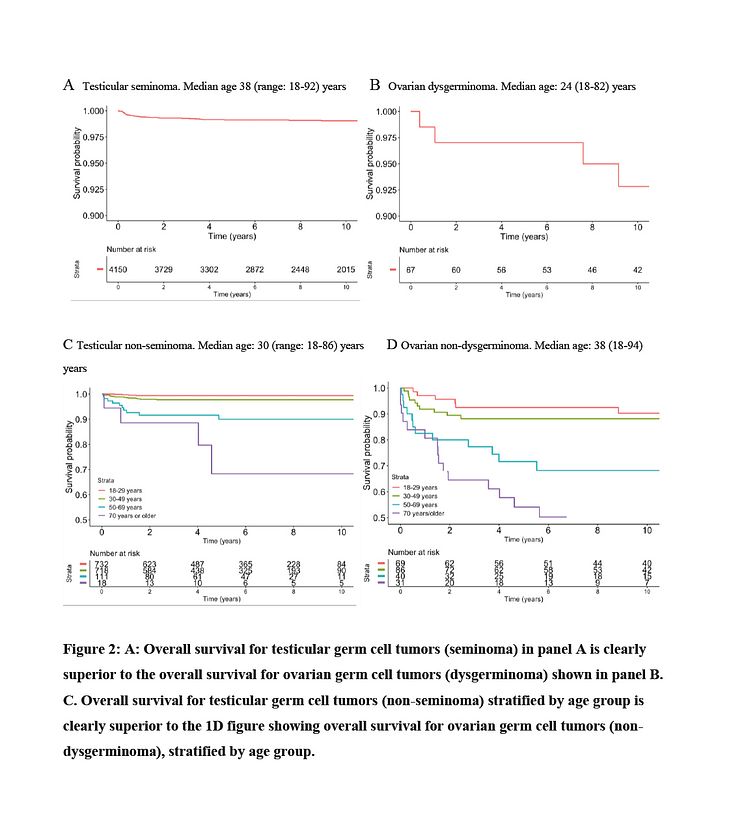
Image -
Germ cell tumours
Figure 2: A: Overall survival for testicular germ cell tumours (seminoma) in panel A is clearly superior to the overall survival for ovarian germ cell tumours (dysgerminoma) shown in panel B. C. Overall survival for testicular germ cell tumours (non-seminoma) broken down by age group is clearly superior to the 1D figure showing overall survival for ovarian germ cell tumours (non-dysgerminoma), broken down by age group.
Journal of Internal Medicine
- License:
- Media Use
The content may be downloaded by journalists, bloggers, columnists, creators of public opinion, etc. It can be used and shared in different media channels to convey, narrate, and comment on your press releases, posts, or information, provided that the content is unmodified. The author or creator shall be attributed to the extent and in the manner required by good practice (this means, for example, that photographers should be attributed).
- By:
- Journal of Internal Medicine
- Copyright:
- Journal of Internal Medicine
- File format:
- .jpg
- Size:
- 1146 x 1279, 1.18 MB
